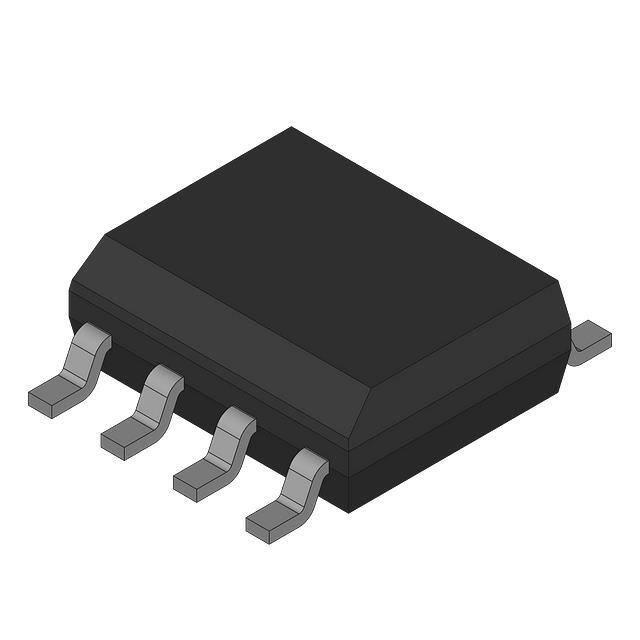Introduction to the material of hard plastic microfluidic chip
Microfluidic chips use micromachining technology to process tiny channels and microstructures on the surface of micrometer-scale materials to achieve microfluidic control and operation. Common microfluidic chip polymer (plastic) materials include COC cycloolefin polymer, PMMA, PC, PE, PP, PVC, PS, PC, PF, EP, ABS, PA, etc.

1.PMMA (polymethyl methacrylate)
Polymethyl methacrylate (PMMA), also known as acrylic, organic glass or acrylic, is a transparent, thermoplastic plastic with high transparency, low price and easy mechanical processing. It is often used as a substitute for glass.
Density: The density of PMMA is about 1.15-1.19g/cm³, which is lighter than glass.
Mechanical strength: With a high relative molecular mass and long-chain polymer structure, PMMA has high strength, and its tensile and impact resistance is 7 to 18 times higher than that of ordinary glass.
Melting point: The melting point of PMMA is low, much lower than about 1000C of glass.
Light transmittance: The light transmittance of PMMA is as high as 92%, which is better than ordinary glass.
Chemical stability: PMMA has good resistance to most inorganic acids, alkalis and salts, but is easily corroded by certain organic solvents such as acetone and chloroform.
COC cyclic olefin polymer
Cyclic olefin copolymer (COC) is an amorphous polymer, mainly used for products that require glass-like clarity, including lenses, vials, displays and medical equipment. The new cyclic olefin copolymer packaging material (COC) has changed the previous impression that polyolefin crystals are not transparent enough. It has the advantages of both crystalline and non-crystalline polymers, such as high transparency, high heat resistance, good optical and electrical properties, low water absorption and permeability, good biocompatibility, and less dissolution, and has a broad space for application in medicines and foods.
PE (polyethylene)
Polyethylene (PE) is a linear polymer with an extremely simple molecular structure composed of repeated "-CH2-CH2-" units. This structure gives PE a variety of unique physical and chemical properties:
Lightweight: PE has a low density of approximately 0.91 to 0.96 g/cm³, making it a representative of lightweight materials.
Chemical corrosion resistance: PE exhibits good chemical stability to most acid, alkali and salt solutions.
Electrical insulation: As a non-polar material, PE has excellent electrical insulation properties.
Low temperature resistance: PE can maintain its physical properties at temperatures as low as -70°C.
Thermoplasticity: PE can be reshaped after heating, making it easy to recycle and reprocess.
PP (polypropylene)
Polypropylene (PP) is a linear thermoplastic made from propylene monomers through polymerization. PP has the following significant physical and chemical properties:
Heat resistance: PP has a melting temperature between 160 and 170C, has good heat resistance, and is suitable for manufacturing products that need to withstand high temperature environments.
Chemical corrosion resistance: PP has good stability to chemicals such as water, inorganic salts, acids and alkalis, but is easily corroded by certain organic solvents.
Rigidity: PP has high rigidity, which allows it to maintain its shape even when subjected to large loads.
Fatigue resistance: PP has good fatigue resistance and is suitable for applications that require repeated bending or twisting.
Thermoplasticity: PP can be repeatedly heated and cooled without losing its physical properties, making it easy to recycle.
PVC (Polyvinyl Chloride)
Polyvinyl chloride (PVC) is a polar non-crystalline thermoplastic made by polymerizing vinyl chloride monomer. PVC has the following significant physical and chemical properties:
Chemical corrosion resistance: PVC has high resistance to acids, alkalis and salts, but is easily corroded by certain organic solvents.
Mechanical strength: PVC has good mechanical properties, including tensile strength and impact resistance.
Electrical insulation: As a non-polar material, PVC has excellent electrical insulation properties.
Weather resistance: PVC has good resistance to ultraviolet rays and chemicals in the atmosphere, making it suitable for outdoor use.
Thermal stability: PVC needs to be added with heat stabilizers during processing to prevent thermal decomposition.
PS (Polystyrene)
Polystyrene (PS) is a thermoplastic known for its transparency, light weight and easy processing. PS has the following remarkable physical and chemical properties:
Transparency: PS has good transparency, especially in thinner sheets or containers.
Processability: PS is easy to process and can be processed by a variety of methods such as injection molding, extrusion, and blister molding.
Insulation: As a non-polar material, PS has excellent electrical insulation properties.
Impact resistance: PS has good impact resistance at room temperature, but this property decreases with decreasing temperature.
Thermal stability: PS may undergo thermal degradation when exposed to high temperatures for a long time, so temperature control is required during processing and use.
PC (Polycarbonate)
Polycarbonate (PC) is an amorphous thermoplastic with high transparency and excellent mechanical properties. The physical and chemical properties of PC are as follows:
Transparency: The light transmittance of PC can reach 90%, making it an ideal material for making transparent plastic products.
Impact resistance: PC has extremely high impact strength and can maintain its impact resistance even at low temperatures.
Temperature resistance: PC has a glass transition temperature of around 150°C, has good short-term heat resistance, and is suitable for high temperature environments.
Weather resistance: PC has a certain tolerance to UV rays, but long-term exposure to sunlight may cause degradation.
Mechanical properties: PC has good tensile strength, bending strength, and compressive strength.
ABS (Acrylonitrile-Butadiene-Styrene)
Acrylonitrile-Butadiene-Styrene (ABS) is a common thermoplastic polymer, which is copolymerized by three monomers: acrylonitrile, butadiene, and styrene. ABS combines the characteristics of the three monomers and has the following significant physical and chemical properties:
Comprehensive performance: ABS has good mechanical properties such as high strength, high toughness, and good hardness, making it the material of choice for many applications.
Impact resistance: Due to the addition of butadiene, ABS has excellent impact resistance, which can be maintained even at low temperatures.
Processability: ABS is easy to process and can be formed by injection molding, extrusion, thermoforming, and many other methods.
Thermal stability: ABS has good thermal stability during processing, but the long-term use temperature usually does not exceed 80°C.
Electrical insulation: As a non-polar material, ABS has good electrical insulation properties.
Chemical corrosion resistance: ABS has good stability to chemicals such as water, inorganic salts, acids and alkalis, but is easily corroded by certain organic solvents.
PF (phenolic plastic)
Phenolic plastic (PF), also known as bakelite, is a thermosetting plastic that is widely used in the industrial field for its excellent mechanical properties and heat resistance.
Heat resistance: PF has a high heat deformation temperature, usually above 150°C, which enables it to remain stable in high temperature environments.
Mechanical properties: PF has high hardness and strength, and can maintain these properties in long-term use and is not easy to deform.
Electrical insulation: As a non-polar material, PF has good electrical insulation properties and is suitable for electrical insulation materials.
Chemical corrosion resistance: PF has good stability to most chemicals, including acids, alkalis and organic solvents.
Thermosetting: PF will not melt again after processing and molding, and has irreversible thermosetting properties, which makes it have good dimensional stability after molding.
EP (Epoxy Plastic)
Epoxy plastic (EP) is a thermosetting plastic based on epoxy resin, with the following remarkable physical and chemical properties:
Adhesion performance: EP has extremely strong adhesion and can be firmly bonded to a variety of materials, including metals, glass and various plastics.
Mechanical strength: After curing, EP exhibits excellent mechanical strength and hardness, suitable for applications with high loads.
Chemical corrosion resistance: EP has good stability to most chemicals, including acids, alkalis and organic solvents.
Electrical insulation: As a non-polar material, EP has good electrical insulation properties and is suitable for electronic and electrical applications.
Temperature resistance: EP has good heat resistance and can be used for a long time within a certain temperature range without losing performance.
PA (Polyamide)
Polyamide (PA), commonly known as nylon, is a synthetic polyamide plastic with excellent physical and chemical properties:
High strength and toughness: PA contains amide groups in its molecular chain, which makes it very strong and tough, especially in low temperature environments.
Wear resistance: PA has a low friction coefficient and good wear resistance, making it suitable for manufacturing bearings and gears, etc.
Chemical corrosion resistance: PA has good resistance to most organic solvents, alkalis and salts, but is susceptible to corrosion by certain acids and oxidants.
Thermal stability: PA can be used at higher temperatures, but long-term exposure to high temperatures may cause thermal degradation.
Hygroscopicity: PA has a certain hygroscopicity, which may affect its mechanical properties and dimensional stability.


